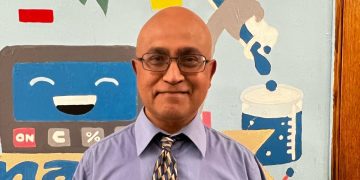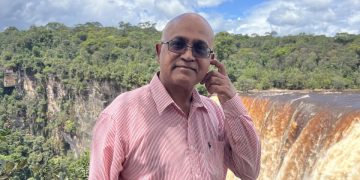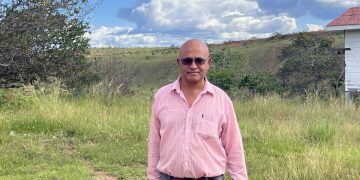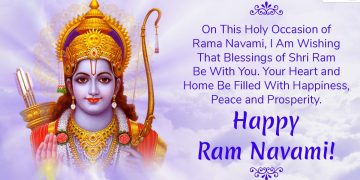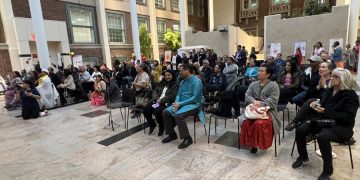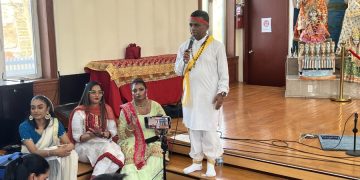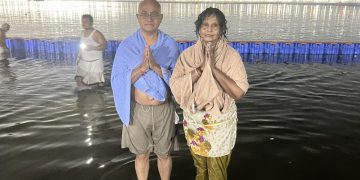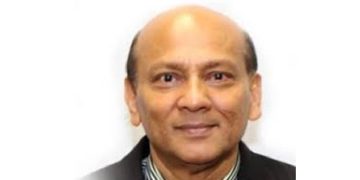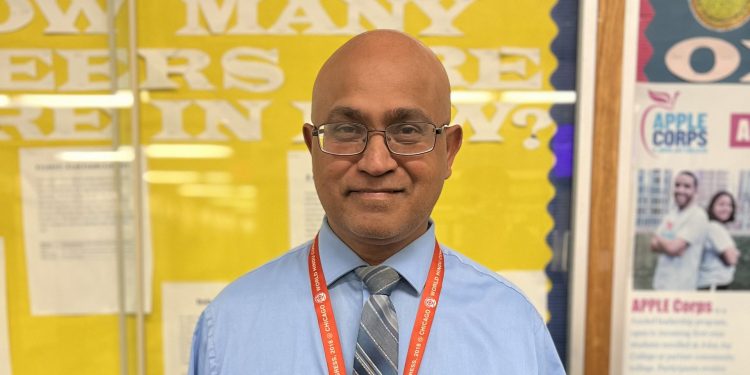Holika will be burnt on the evening of Tuesday March 7 and Holi or Phagwah will be celebrated the following day on March 8. In India, as it is in Guyana and several other countries, Holi is a national holiday. In the USA, it will be observed on Tuesday evening as well as on Wednesday. Celebrations are planned in New York at several government offices __ Mayor, Queens Boro President, City Council, and of elected representatives of the state and city. Separately, Holi was and will be celebrated at mandirs with chowtaal and Bollywood singing.
In Guyana, Trinidad, and Suriname, Phagwah is a national festival and celebration. It is a national holiday only in Guyana among Caribbean countries. Although largely a Hindu celebration, people of all faiths and ethnicities partake in the festivities in the region as they also do in India and other societies. It has become a non-sectarian celebration in the Caribbean and USA although some non-Hindus were known to be quite upset and reacted angrily, at times violently, when people ‘played Phagwah’ with them.
Across the U. S, it is celebrated in a grand way the Sunday after the official day at public locations in areas where Indian-Caribbeans and Indian Americans are settled in large numbers like Central Florida, South Florida, New Jersey, the Bronx, and Queens. College campuses are known to host a bonfire for Holi followed by feasting, music, jollification, and colorful displays of powder.
The large influx of Guyanese and Trinidadians, beginning in late 1960s and continuing up until this day, has made it possible for Phagwah to be celebrated in NY somewhat similar to Guyana and Trinidad, except for the cold weather which prevents all the other traditions that are experienced in Guyana. In Guyana, holi historically was celebrated outdoors – burning of holika at midnight, singing of chowtaal songs and drumming and playing of other musical equipment.
In Guyana, as well as in Trinidad and Suriname, every Indian village observed or celebrated chowtaal. In mixed villages, some non-Hindus and non-Indians joined in the festivities. In Trinidad, celebrants used to go a large park where they played ‘phagwah’ amidst chowtaal singing and musical entertainment. In Guyana, celebrants went from street to street on foot, home to home within the village, and village to village ‘playing’ phagwah. Chowtaal gaols (groups) went around singing, performing on their musical equipment, and dancing all the while entertaining people. They slowly made their way from the open ground, a cricket playground, performing as people came out of their homes to play with them. Chowtaal gols atop tractors and trucks, singing and playing musical equipment, used to around to far distances to play Phagwah while displaying their chowtaal singing and music talent. In the late afternoon, members went around, mostly clad in white, playing phagwah with powder and abeer.
When they came to USA post 1965 following the opening up of the country to Indians and other minorities, the small number of Indo-Caribbeans initially observed Holi in hotel rooms and apartments where they resided during the 1960s and 1970s. As Guyanese purchased houses in the late 1970s and afterwards, celebrations shifted to basements. Mandirs were founded in several basements and celebrations of several Hindu festivals were held in them. Phagwah was first celebrated at Calo Hotel on 56th and 8th Avenue in 1970 by the Mahatma Gandhi Satsangh Society. The temple services moved to Martinique Hotel in 1971. Facing pressure from the hotel management, the services moved to Clark Hotel in 1972 and remained there for a few years before the organisation acquired a building on Pacific Street (near Warwick), where Sunday services and Phagwah were celebrated. Later, the temple moved to Townsend Avenue in the South Bronx where Phagwah was celebrated. Pandit Gunnar hosted a mandir in his basement at a large apartment building on Townsend in the Bronx. Phagwah and other festivals were celebrated there during the 1980s. Pandits Gunnar, Walter Misir, and Johnny Dewa were responsible for the service at the temple. Phagwah was celebrated in the temple’s yard on the Sunday before or after the official observance.
Pt Tiwari also hosted a mandir in the basement of his apartment building on Ave D (near Foster Ave) in Brooklyn; Phagwah and other festivals were also celebrated there during the 1980s. A Holy Samelan was held at Hillcrest high school in Jamaica on a Saturday evening in 1984. Celebrations were held at other locations the following years. Vishnu Bandhu organized celebrations in his business location at 1262 Broadway in Brooklyn. The Indo-Caribbean population continued to grow in numbers, exceeding a couple hundred thousand by the end of 1980s. Eventually, organizers decided to have a Phagwah parade on Liberty Avenue, the fulcrum of Indo-Caribbean businesses. The parade culminated at Smokey Park. Other parades were held in the Bronx, Queens Village, and Jersey City. Prior to 1990, Phagwah observances were minimal in the U. S. and took place mostly indoors at public schools or in the temples or their compounds. The parades brought tens of thousands of celebrants together in the largest celebration of the Holi or any festival outside of India. Several mandirs including Mahatma Gandhi Satsangh Society (Oumadat); Brooklyn Hindu Temple (Pandit Viresh Maharaj); Lakshmi Mandir (Pandit Jadonath) and others played Phagwah in or around the compound of their mandirs. At City College which had the largest enrolment of Indians in greater NY region, the festival was celebrated (with snacks and drinks) by students of the Indo Club. The celebration has spread to other locales where Indians migrated and settled in clusters around the USA.
Celebrations changed with the launching of the parade in 1990 with people eagerly looking forward for the festival which is now celebrated in grand splendor. It is now a cherished institution in the community that brings tens of thousands together. It has become a wonderful celebration and a debt of gratitude is owed to all those who worked tirelessly to make it a huge success notably pandits Dr Satish Prakash and Pandit Ramlall and Ramesh Kalicharran. Credit must also be given to Anand Sukul, Bal Naipaul, Pandit Mahendra Doobay, Radharaman Upadhyaya, Pandit N Bisnauth, Pandit Kishore Magnauth, Pandit Krishna Tiwari, Shri Prakash Gossai, the late Dharmacharya Arjune Doobay, late Dharmacharya Misir, and all others who were so closely involved with the first edition of the parade. All the organisers should be recognized for their input and contributions in the parade.









